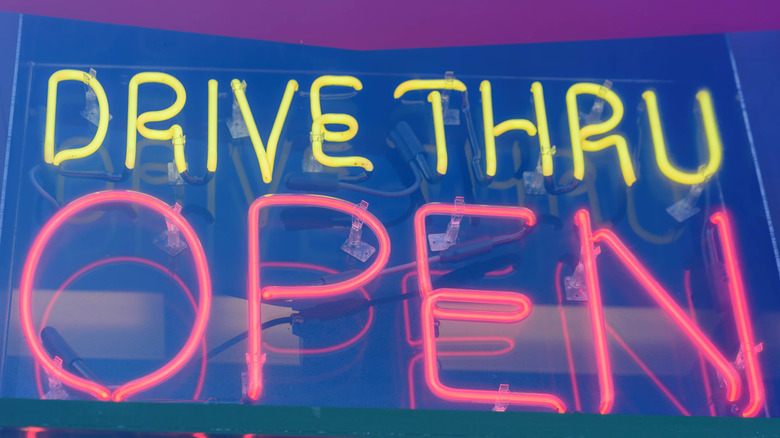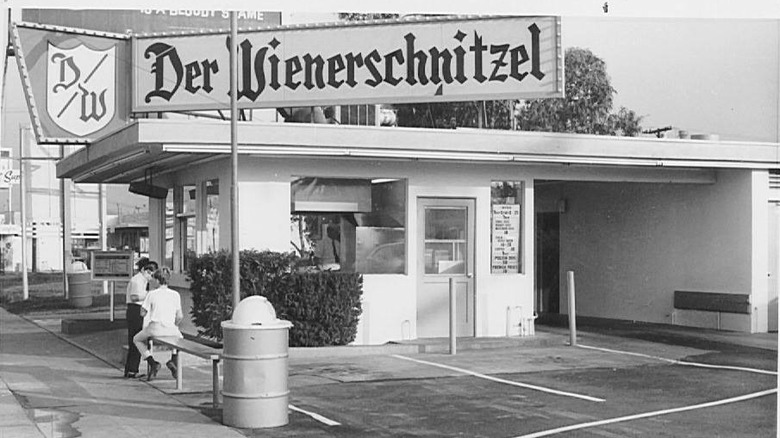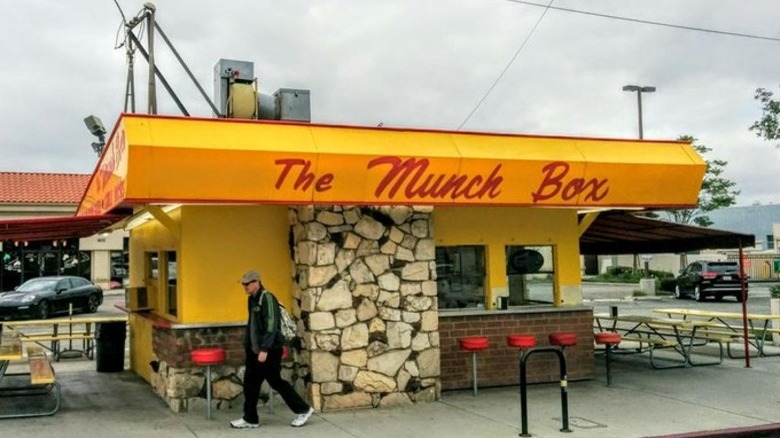The 2 Fast Food Drive-Thrus That Are Considered Historical Landmarks
What makes a place worthy of landmark status? Is it being the first of its kind? Playing host to somebody famous? Those things certainly help, but the biggest factor is arguably nostalgia. That certainly seems to be the case in Los Angeles, where fond memories of Hollywood's heyday define the city's landmarks. The LA City Council has given the special status of Historic-Cultural Monument to more than 1,200 places. The formidable list features world-renowned sites like the Hollywood Sign, Griffith Observatory, and Grauman's Chinese Theater. It also has not one, but two fast food drive-thrus.
Southern California is the most significant region in fast food history, and you can argue amongst yourselves whether that's a good or bad thing. Drive-thru dining as we know it, complete with a two-way intercom system, originated at the first In-N-Out Burger in Baldwin Park (via History). Major chains like Mcdonald's, Taco Bell, and Panda Express all got their start in the area, per Eater. As for the two spots on the Los Angeles registry, they represent two very different types of fast-food restaurants. One is the first of a nationwide chain that serves millions each year, while the other is a mom-and-pop shop that only the locals know. Here are their stories.
Der Wienerschnitzel
Today, Wienerschnitzel is the world's largest hot dog chain, reportedly serving more than 120 million frankfurters annually, but this big brand had humble beginnings. According to Thrillist, Wienerschnitzel was originally known as Der Wienerschnitzel, and when it opened in 1961, you could buy a hot dog for just 15 cents. Its founder, John Galardi, was a transplant from Kansas City whose first job in California was working for a restaurant called Taco Tia, the predecessor of Taco Bell. He decided to turn his new business into a drive-thru in order to keep people from loitering in the parking lot. This made Wienerschnitzel even more appealing to motor traffic, which worked out great since the original location was located in the LA neighborhood of Wilmington, right along the Pacific Coast Highway.
In 2013, the Los Angeles City Council added the original Wienerschnitzel to its list of historic-cultural monuments (via the Los Angeles Times). The minuscule building, less than 600 square feet in total, looks very different from the typical A-frame design that later Wienerschnitzel franchises would follow. Discussing its addition to the historic register, Ken Bernstein, head of the Los Angeles Office of Historic Resources noted that this particular Wienerschnitzel has a special significance beyond its food. "The building also is a very intact example of an early drive-through and walk-up food stand associated with Los Angeles car culture," he told the Times. It's nice to see the gridlocked city's automotive identity represented in a good light.
The Munch Box
Yes, there's a restaurant called Munch Box. We'll pause while you laugh. Got it all out of your system? Great ... let's move on. Located in the San Fernando Valley neighborhood of Chatsworth, this roadside stand specializing in burgers, fries, and root beer floats has been owned by the same family since it opened in 1956 (via Atlas Obscura). The Munch Box nearly shut down in the early 2000s when it was threatened by nearby developments, but then the city received 1,700 letters from locals expressing how much it meant to them and urging the council to add it to the list of historic-cultural monuments. According to the Los Angeles Times, city councilman Hal Bernson took up the cause, and with his urging, the Munch Box was added to the registry in 2003.
While Wienerschnitzel's drive-thru was significant to Los Angeles car culture, the Munch Box has a different story. It was also a drive-thru ... but for trains. The Chatsworth Historical Society explains that the restaurant opened alongside a railroad and, during the '50s and '60s, conductors would stop their trains there for lunch if they had the time. Since those early days, not much else has changed. The root beer is no longer made on-site for 10 cents, and the horse-hitching post has been removed, but the building's iconic Googie architecture, and the bulk of the menu, remain in their original state.


